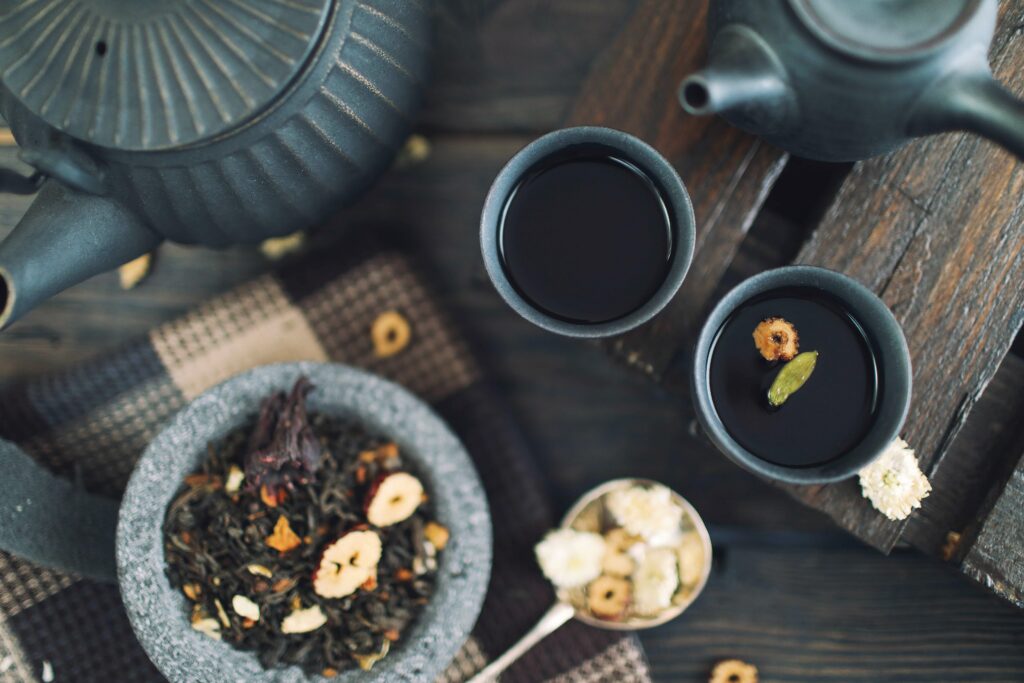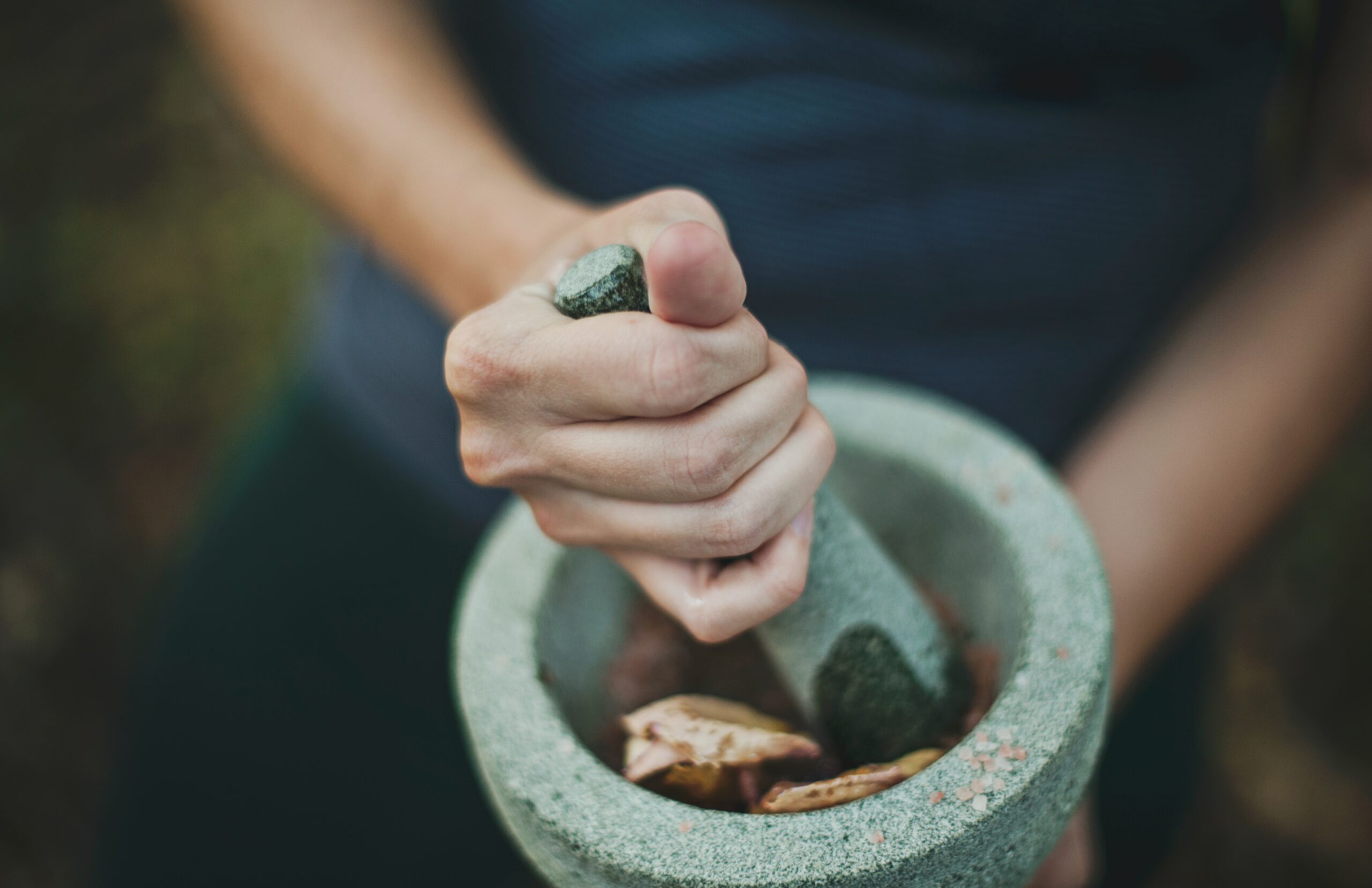Date of the last update: 28.06.2023
Table of contents:
- The Traditional Chinese Medicine philosophy
- Traditional Chinese Medicinal Herbs
- Goji Berries
- Ginseng
- Codonopsis Root
- Astragalus Root
- Cordyceps
- Reishi
- Ginger
You can read this article in 4 minutes.
The Traditional Chinese Medicine philosophy
Traditional Chinese medicine is a combination of activities, healing practices, and dietary habits that have existed for thousands of years, and that have gained popularity in Western countries in recent years. At the core of Chinese medicine philosophy is the concept of ‘Qi’, which is believed to be the energy and life force present in the body. With Qi being the vital life source, all illness is believed to derive from an imbalance in Qi, originating from an imbalance between yin and yang energy.
As in many forms of holistic healing philosophies, Chinese medicine sees humans as part of a universal whole, deeply interconnected with nature, and the cosmos. Gaining and maintaining ‘balance’ is at the centre of all practices of Chinese medicine, and this balance between the self and external elements such as earth, fire, water, wood and metal is achieved through a variety of activities, most typically including movement such as tai chi; mental concentration exercises; treatments such as acupuncture, cupping, and massage; and the use of medicinal herbs, which is the topic of this article.
Traditional Chinese Medicinal Herbs

There are numerous herbs that are used to help people find and maintain balance. Below we share some of the most commonly used ones, as well as how to make them part of your well-being practice. There are a huge number of herbs and extracts used in traditional Chinese medicine, and the below are some of the most commonly-cited and accessible amongst these, covering a large number of common ailments.
Goji Berries
In China, goji berries are known as ‘wolfberry fruit’, and are mentioned in the oldest book of Chinese herbs: ‘Shen Nong Ben Cao Jing’. Goji berries contribute to balancing Qi with their detoxifying qualities, and this ‘superfood’ has been proven to be a source of antioxidants, amino acids, potassium, and iron. They are also believed to boost immune function, contribute to skin and eye health, improve people’s mood, cleanse the liver, and boost fertility.
Ginseng
Ginseng is an Asian leafy plant, known in Chinese medicine as an adaptogen, helping the body adapt to stress. The plant also has anti-inflammatory and antioxidant properties and helps the body produce collagen and strengthen the immune system. There are plenty of ginseng extracts available in powder, capsule and even liquid forms, though the root can also be eaten directly raw, steamed, incorporated into a recipe, or infused into a tea.
Codonopsis Root
Although this plant is less well-known in Western countries, it is one of the oldest remedies in traditional Chinese medicine. It is believed to promote health by improving digestion and energy levels, increasing vitality. Codonopsis extracts can be found in many online shops.
Astragalus Root
Another lesser-known plant, astragalus is used preventatively as an immune system booster, as well as to increase energy levels and act as an antioxidant. Astragalus can be bought in powder form, and added to smoothies, cereals, and baked foods. There are also oils and creams with astragalus extract.
Cordyceps
Cordyceps are a type of fungus used to treat kidney disorders and respiratory infections, increase reproductive health, and soothe the lungs. As cordyceps are difficult to find wild, they are usually grown in labs, and available in tablet, powder and capsule forms.
Reishi
Reishi is a mushroom with a large list of health benefits, believed to boost heart and liver health, slow ageing, and enhance strength and stamina. It is also used to reduce inflammation, stabilise blood sugar, and regulate hormones. Today it is most commonly consumed in powder and capsule forms, though traditionally the mushroom was used in soups, or dried and infused as a tea.
Ginger
Ginger has been used in traditional Chinese medicine for centuries. With no known side effects, it has traditionally been used in oil form to treat nausea. Ginger stimulates the digestive system, and is used to reduce colds, coughs, headaches, and rheumatoid arthritis; it is also a natural antihistamine. There are many ways to consume ginger. The most typical way is to consume the fresh root directly in stews, soups and teas, though it can also be consumed in powder or capsule form.
Check out also: Pak Choi: Recipes Using Nutritious Chinese Cabbage
Enjoy the many benefits of incorporating these herbs and extracts into your diet, and of exploring the philosophy behind ancient traditional Chinese medicine!
Sources:
- Acupuncture Alternatives (2019). ‘Uses of Ginger in Traditional Chinese Medicine’. Acupuncture Alternatives.
- Johns Hopkins Medicine (n/d). ‘What is Chinese Medicine?’. Johns Hopkins Medicine.
- Ruggeri, C. (2023). ‘Top 15 Chinese Herbs & Superfoods to Boost Health’. Dr. Axe.
- Semeco, A. (2022). ‘7 Proven Health Benefits of Ginseng’. Healthline.
- Thurrott, S. (2022). ‘Everything You Need to Know About Astragalus’. Everyday Health Newsletters.
- Wthn (2022) ‘Traditional Chinese Medicine Herbs List to Improve Overall Health’. Wthn.

